
China
16:32, 22-May-2018
China’s manned submersible returns from night dives with samples from cold seep
By Jiang Jiao
01:02
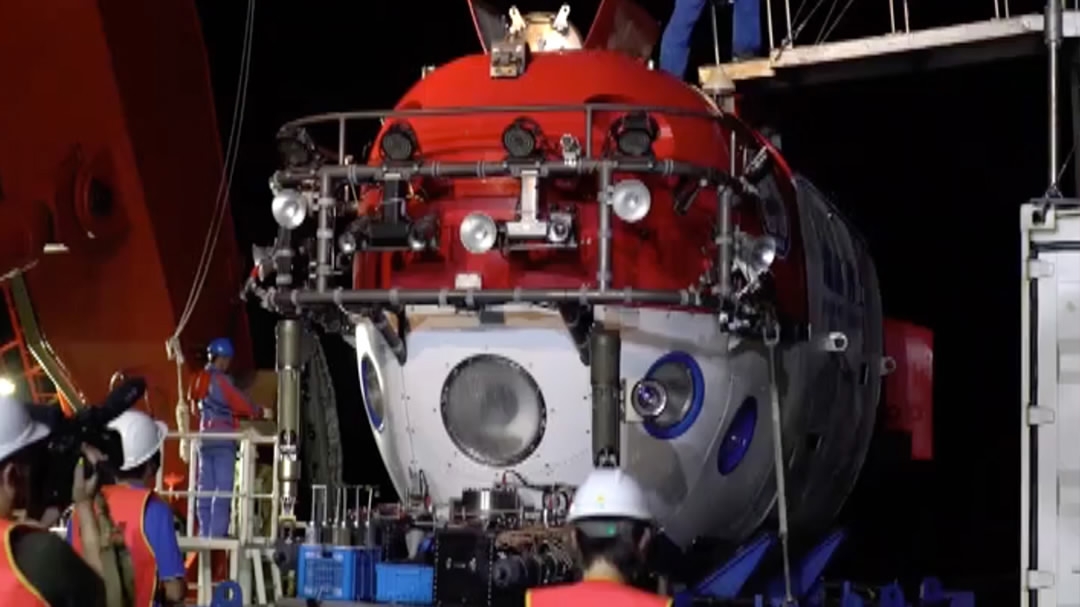
China’s manned submersible Shenhai Yongshi, or Deep Sea Warrior, returned to its mother vessel Tansuo-1 early Sunday morning after over eight hours’ exploration in the South China Sea, carrying with it samples collected from a cold seep at a depth of about 1,400 meters.
The submersible conducting the third phase of science expedition in this sea area has completed three diving tasks within two days, including two successive night dives, which is quite extraordinary since other than China, there is only one country, Russia, that has mastered the night-dive technology.
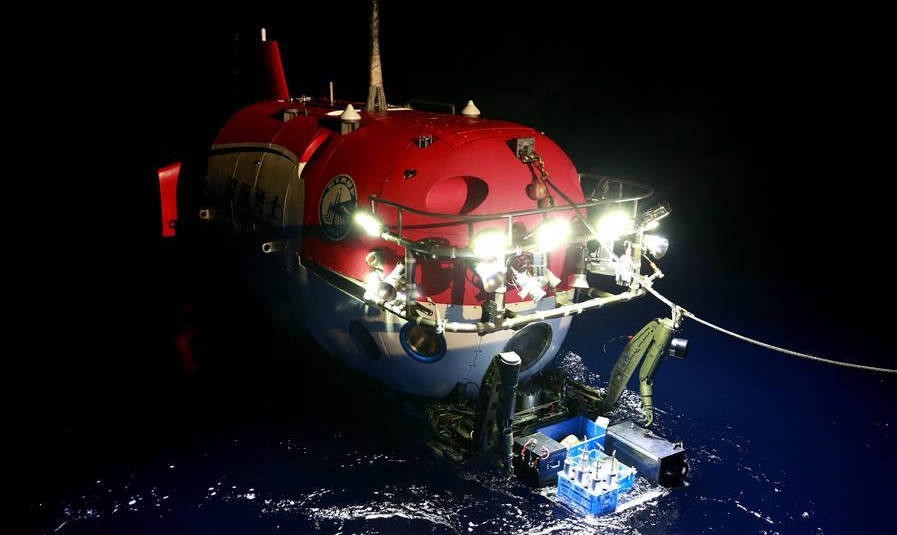
The submersible Deep Sea Warrior return to the oceanic research vessel Tansuo-1. /Xinhua Photo
The submersible Deep Sea Warrior return to the oceanic research vessel Tansuo-1. /Xinhua Photo
According to team leader Peng Xiaotong, night dive is challenging as it is hard to ensure the safety when launching and retrieving the submersible at night. Owing to an effective operation-and-maintenance procedure, Deep Sea Warrior can work full-time with enhanced efficiency and emergency response capability.
As Deputy Chief Designer Yang Shenshen explained, the procedure mainly consists of a thorough power-on check before launch, monitoring and analysis of data when the submersible is in water, and regular maintenance after retrieval.
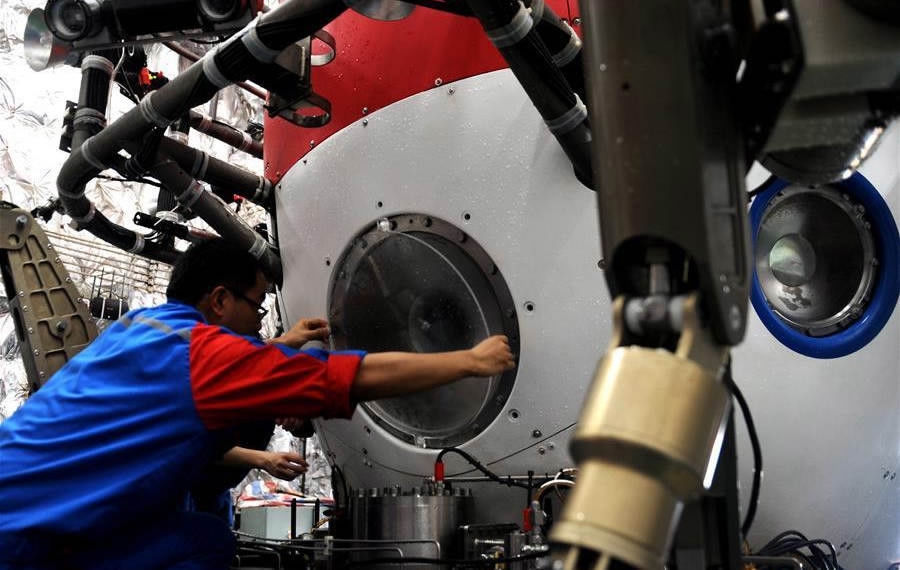
Staff members prepare the submersible for a night dive. /Xinhua Photo
Staff members prepare the submersible for a night dive. /Xinhua Photo
Trophies from the trip, including strange-looking sea animals like cold-seep mussels and tube worms, and some geological samples, will be categorized and studied for scientific purpose in lab. Hopefully, they can help scientists know more about the ecosystems of cold seeps, the origins of life on earth and the formation of natural gas hydrate reservoirs down there.
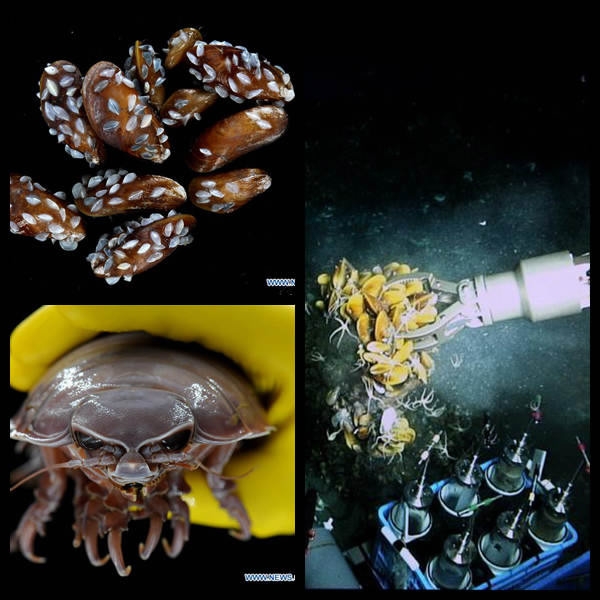
Biological samples (L) collected from a cold seep in the South China Sea and a photo (R) showing the submersible collecting samples /Xinhua Photo
Biological samples (L) collected from a cold seep in the South China Sea and a photo (R) showing the submersible collecting samples /Xinhua Photo
A cold seep is an area of the ocean floor where hydrogen sulfide, methane and other hydrocarbon-rich fluid seepage occurs. Exploration of the Haima Cold Seep in the South China Sea started in the end of this April, when the unmanned submersible Haima (Seahorse) and the manned Deep Sea Warrior probed the area together.
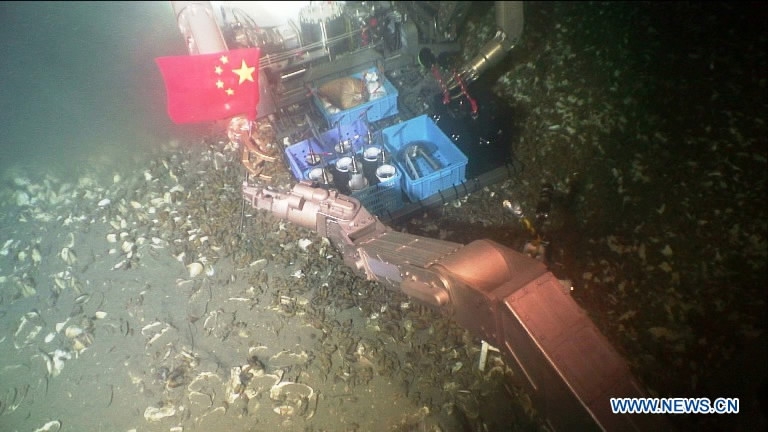
A photo taken by the unmanned submersible Haima shows a joint deep-sea work with the Deep Sea Warrior in a cold seep in the South China Sea. /Xinhua Photo
A photo taken by the unmanned submersible Haima shows a joint deep-sea work with the Deep Sea Warrior in a cold seep in the South China Sea. /Xinhua Photo
Since put into use this year, the Deep Sea Warrior has completed 16 night dives with an average working time over eight hours each time. It is expected to return to the base in Sanya city, Hainan Province when it finishes all the tasks in the end of May.

SITEMAP
Copyright © 2018 CGTN. Beijing ICP prepared NO.16065310-3
Copyright © 2018 CGTN. Beijing ICP prepared NO.16065310-3